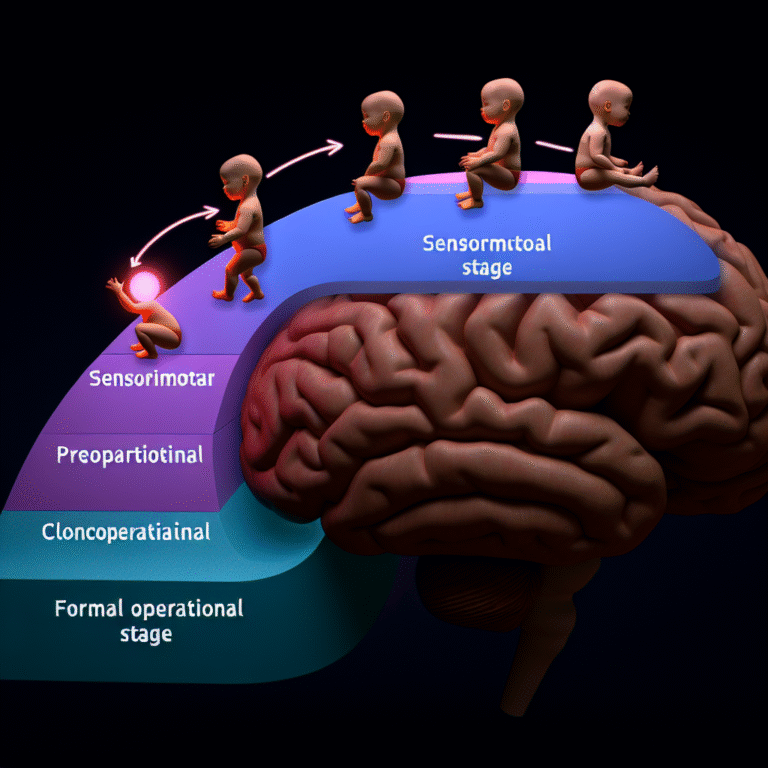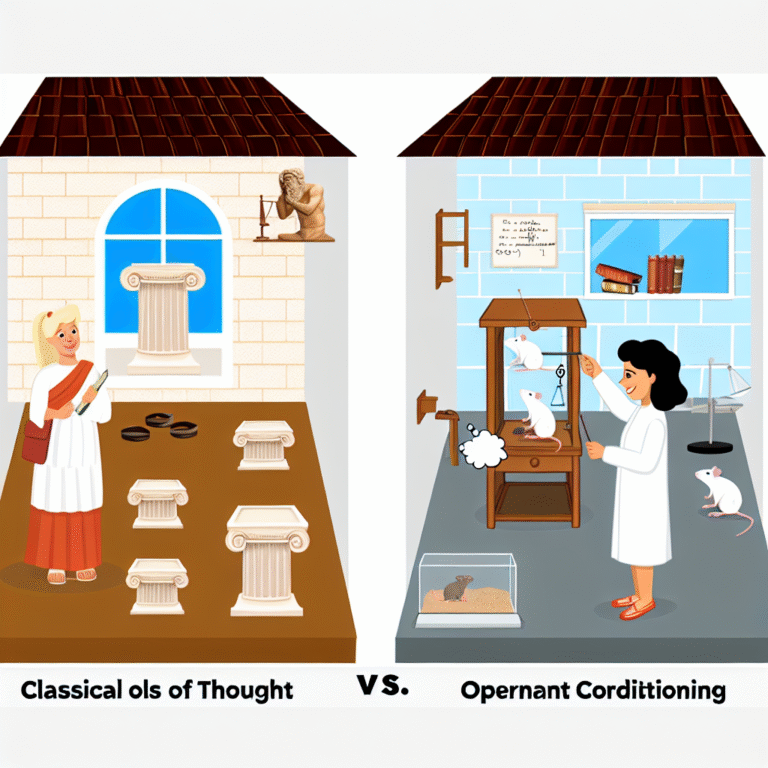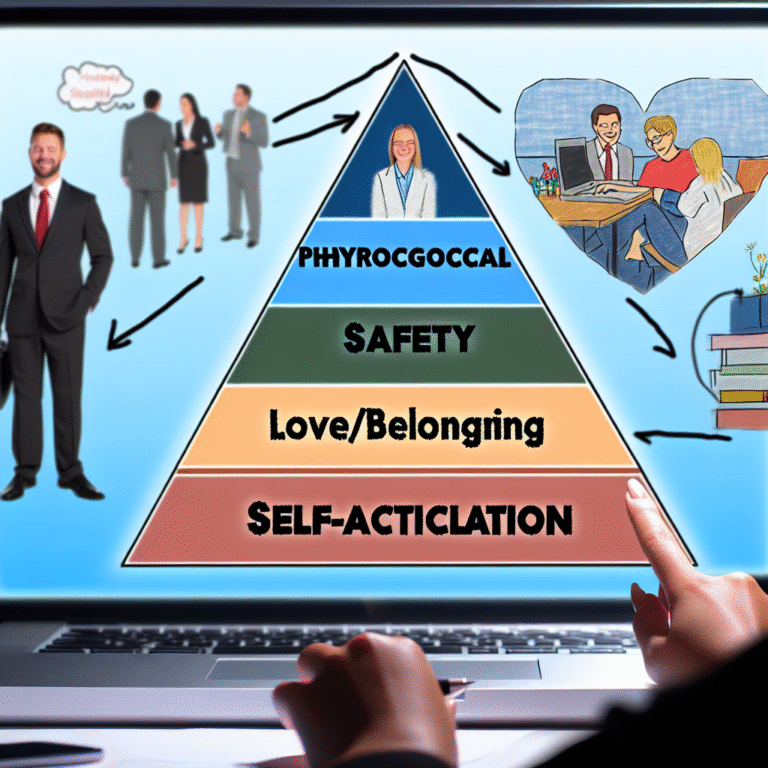
The Pyramid of Needs: Exploring the Ultimate Foundations of Human Motivation
Introduction
In the quest to understand human behavior, motivation stands as a cornerstone of psychology and sociology. One framework, in particular, has captivated scholars and practitioners alike for decades: The Pyramid of Needs: Exploring the Foundations of Human Motivation. Originally proposed by psychologist Abraham Maslow in the 1940s, this pyramid illustrates the hierarchy of human needs, ranging from the most basic physiological requirements to the pursuit of self-actualization. As we navigate the complexities of modern life—marked by rapid technological advancements, shifting societal norms, and evolving personal aspirations—understanding this hierarchy becomes not only enlightening but essential.
The concept invites us to consider the very essence of what drives us, challenging us to delve deeper into our own motivations. This article is an in-depth exploration of The Pyramid of Needs: Exploring the Foundations of Human Motivation and will serve as a comprehensive guide for anyone intrigued by the intricacies of human desire and purpose.
The Hierarchical Structure of Maslow’s Pyramid
1. Physiological Needs: The Foundation of Life
At the base of The Pyramid of Needs: Exploring the Foundations of Human Motivation lie physiological needs—our most fundamental requirements for survival. These include air, water, food, shelter, and sleep. Until these needs are met, individuals find it challenging to focus on anything else.
Case Study: The Impact of Homelessness
Consider the case of Alex, a city dweller experiencing homelessness. For Alex, locating food and safe shelter consumes daily life, rendering higher-level pursuits such as education or career development distant ambitions.
| Physiological Needs | Importance |
|---|---|
| Air | Essential for respiration |
| Water | Necessary for hydration |
| Food | Fuels the body |
| Shelter | Protects from environmental hazards |
| Sleep | Vital for health and recovery |
Meeting these basic needs is a prerequisite before one can aspire to higher tiers of the pyramid.
2. Safety Needs: The Quest for Security
Once physiological needs are satisfied, the next layer encompasses safety needs. These involve both physical safety and emotional security, including health, financial stability, and protection from harm.
Case Study: Workplace Safety Protocols
Consider the tech company XYZ Inc., which prioritized employee health and safety through rigorous safety protocols. Following the implementation of these measures, employee morale and productivity surged. This illustrates that when individuals feel secure, they are more likely to engage in creative and constructive endeavors.
3. Love and Belongingness Needs: The Desire for Connection
With safety established, humans pursue love and belonging—a crucial aspect of emotional well-being. Relationships with family, friends, and communities form this layer.
Case Study: Group Therapy Transformations
In therapy groups, individuals often find transformative insights when they connect with others facing similar challenges. For instance, a support group for substance abuse recovery fosters a sense of belonging that aids individuals in their recovery journey.
4. Esteem Needs: Affirmation and Recognition
The fourth layer of The Pyramid of Needs: Exploring the Foundations of Human Motivation pertains to esteem needs. This encompasses self-esteem, confidence, and the respect of others. When individuals achieve a sense of esteem, they are more likely to explore their potential and contribute positively to society.
Case Study: The Role of Praise in Education
Research from educational institutions demonstrates that students who receive consistent positive reinforcement exhibit higher academic performance. Such recognition not only boosts confidence but also nurtures a lifelong love for learning.
5. Self-Actualization Needs: The Pinnacle of Human Motivation
At the apex of Maslow’s pyramid is self-actualization—the realization of one’s potential, creativity, and personal growth. This is where one’s dreams and aspirations take flight.
Case Study: Artistic Pursuits
Artists often exemplify self-actualization. For instance, renowned painter Frida Kahlo’s journey illustrates how pursuing one’s creativity can serve as a form of self-expression and healing. Her work did not just reflect her talents; it became a vital part of her identity, demonstrating that true fulfillment often lies in the pursuit of passion.
The Relevance of the Pyramid Today
As we explore The Pyramid of Needs: Exploring the Foundations of Human Motivation, it’s essential to recognize its relevance today. Modern society has transformed significantly since Maslow’s time, yet the pyramid remains a vital tool for understanding motivation.
A Changing Landscape: The Influence of Technology
With the rise of technology, some layers of the pyramid have transformed. For instance, remote work has affected safety and belonging needs, as employees navigate new virtual landscapes.
Global Challenges: Health and Security
The COVID-19 pandemic has highlighted the importance of physiological and safety needs. As communities grappled with illness and insecurity, addressing these basic needs became paramount for restoring stability and encouraging collective progress.
The Role of Social Movements
Today’s social movements, driven by calls for equality and belonging, resonate deeply with the fourth level of esteem needs. Advocacy for marginalized communities speaks to the universal human desire for validation and acceptance.
The Pyramid of Needs Applied in Various Fields
Understanding The Pyramid of Needs: Exploring the Foundations of Human Motivation can transform various sectors, including business, education, and healthcare.
In Business: Building a Motivated Workforce
Fostering an environment that meets the needs outlined in the pyramid can lead to enhanced employee satisfaction and productivity. Companies can create programs to address safety, belonging, and esteem needs, encouraging greater engagement and retention.
In Education: Nurturing Future Generations
Educators can apply Maslow’s principles by creating safe and inclusive learning environments. Understanding the pyramid helps tailor teaching methods to meet students’ needs, ensuring they feel safe and valued.
In Healthcare: Patient-Centered Approaches
Healthcare practitioners can utilize Maslow’s hierarchy to provide holistic care. Recognizing that patients prioritize physiological and safety needs enables professionals to address concerns effectively, leading to better health outcomes.
Conclusion
In exploring The Pyramid of Needs: Exploring the Foundations of Human Motivation, we uncover profound insights into what drives human behavior. Understanding this hierarchy not only illuminates individual motivations but also guides us in our roles as leaders, educators, advocates, and friends. By addressing the needs outlined in Maslow’s pyramid, we can foster environments where individuals thrive, paving the way for collective growth and fulfillment.
Motivational Takeaway
As you navigate your own journey, consider where you stand within this pyramid. Are your basic needs met? Are you forging connections? Celebrate the small victories and aspire toward self-actualization. Only by understanding our needs can we propel ourselves toward meaningful existence.
FAQs
What is the Pyramid of Needs?
The Pyramid of Needs is a psychological model developed by Abraham Maslow that categorizes human needs into five hierarchical levels: physiological, safety, love and belonging, esteem, and self-actualization.How can I apply the Pyramid of Needs to my life?
By assessing which needs are unmet in your life, you can prioritize addressing those needs to enhance your overall motivation and well-being.Are the needs in the pyramid fixed?
No, while the pyramid presents a hierarchy, individual circumstances can lead to varying levels of needs at different times. For instance, one may prioritize safety needs during difficult economic times.How can businesses use the Pyramid of Needs?
Businesses can create supportive environments that meet employee needs for safety, belonging, and esteem, ultimately enhancing loyalty and productivity.- Is the Pyramid of Needs universally applicable?
While Maslow’s framework has been widely accepted, cultural and individual differences may influence how needs are prioritized and perceived globally.
By understanding The Pyramid of Needs: Exploring the Foundations of Human Motivation, we can navigate our complex lives with greater awareness and intention. It’s time to take action and elevate our lives toward fulfilling our highest potential.
















